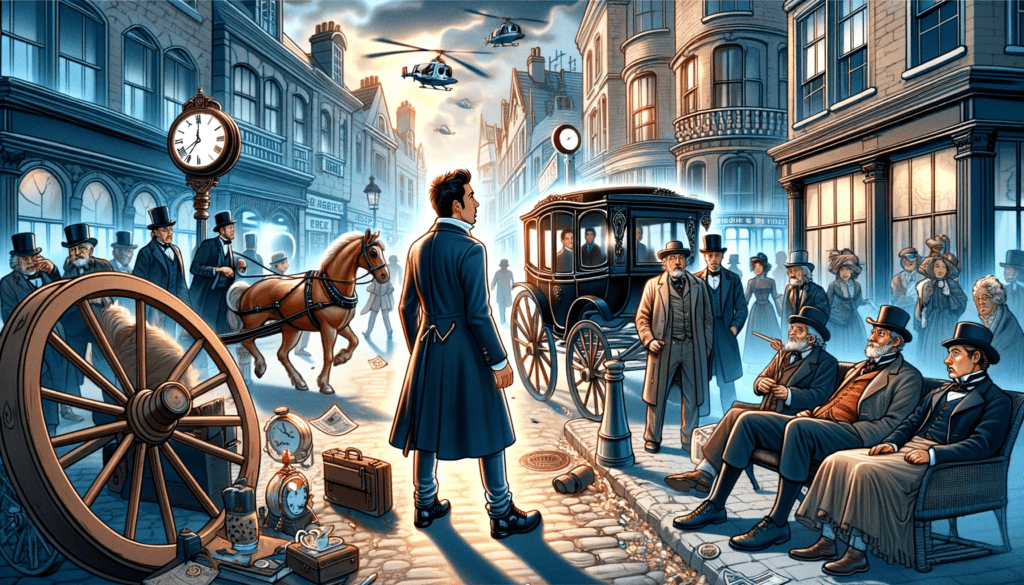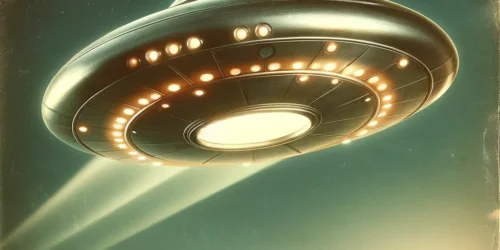The Time Slip Hypothesis

The Time Slip Hypothesis is a theory that suggests that it is possible for individuals or objects to move through time, either by traveling through a wormhole or by slipping through a temporal rift. The idea is that these slips in time can occur unexpectedly and without warning, causing individuals or objects to suddenly find themselves in a different time period. The Time Slip Hypothesis is a topic of debate and speculation, with many people claiming to have experienced or witnessed time slips, but there is no concrete evidence to support the theory.
There have been numerous reports of time slips throughout history, with many individuals claiming to have witnessed or experienced unexplained events that seem to involve time travel. Some of the most famous reports include the story of two British couples who claimed to have driven into a temporal anomaly in France in 1979, and found themselves in a village that looked as though it had not been lived in for decades. Other reports involve people who have claimed to have suddenly found themselves in a different time period while walking or driving, or who have seen buildings or landmarks that do not exist in their own time period.
While it is true that the laws of physics allow for the possibility of time travel, there is no known mechanism for actually accomplishing it, and the idea of slipping through a temporal rift or wormhole remains largely speculative.
Facts about the Time Slip Hypothesis:
- In 1901, two teachers in Versailles, France claimed to have witnessed Marie Antoinette and her court walking through the palace gardens. The teachers claimed that they had slipped through time and were observing events that had taken place more than a century earlier (source: Historic Mysteries).
- In 1969, two English schoolgirls claimed to have walked through a time slip and found themselves in the middle of a bustling market in the 17th century. The girls claimed that they spoke to a number of people in the market and even saw the ghost of a local brewer who had died more than 300 years earlier (source: BBC).
- In 1995, a group of tourists visiting the Palace of Versailles claimed to have slipped through time and found themselves in the palace gardens of the 18th century. The tourists claimed that they saw Marie Antoinette and her court walking through the gardens, and that they were able to interact with them (source: The Unredacted).
While there are many reports of time slips and other unexplained phenomena, there is no concrete evidence to support the Time Slip Hypothesis. Most experts in the field of physics and cosmology believe that time travel is unlikely, and that the laws of physics prevent it from being possible. While some researchers continue to explore the possibility of time travel and the mechanisms that might make it possible, the Time Slip Hypothesis remains largely speculative and unproven.
There have been a number of books written on the topic of time travel and the Time Slip Hypothesis. Examples include “The Time Travel Handbook: A Manual of Practical Teleportation and Time Travel” by David Hatcher Childress, and “Time Slip: The Story of a Portal Through Time” by Graham Phillips. These books explore the possibility of time travel and present a range of theories and ideas about how it might be accomplished.
Calculating Time Travel
The mathematics behind time travel involves the use of concepts from Einstein’s theory of relativity, which describes the behavior of space and time in the universe. Specifically, time travel is usually discussed in the context of general relativity, which is the theory that describes the force of gravity and the curvature of spacetime.
The key mathematical concept involved in time travel is the concept of spacetime curvature, which describes how the fabric of space and time can be bent or distorted by the presence of massive objects. This curvature is described by the equations of general relativity, which are some of the most complex equations in physics.
One of the key equations in general relativity is the Einstein field equation, which relates the curvature of spacetime to the distribution of matter and energy within it. The equation is as follows:
Rμν – 1/2 R gμν = 8πTμν
In this equation, Rμν is the Ricci curvature tensor, which describes the curvature of spacetime, and R is the scalar curvature, which is a measure of the overall curvature of spacetime. The term gμν is the metric tensor, which describes the geometry of spacetime, and Tμν is the stress-energy tensor, which describes the distribution of matter and energy within spacetime.
Another equation that is often used to describe time travel is the equation for the Lorentz factor, which describes how the passage of time changes for objects that are moving relative to each other. The equation is as follows:
γ = 1 / √(1 – v^2/c^2)
In this equation, v is the velocity of the object relative to an observer, c is the speed of light, and γ is the Lorentz factor. This equation shows that as an object approaches the speed of light, its time slows down relative to an observer who is not moving at that speed.
There are many other equations and mathematical concepts involved in the study of time travel, including the concept of wormholes and the theory of closed time-like curves.
To attempt time travel using these two equations, a scientist would need to manipulate the curvature of spacetime and exploit relativistic effects.
First, consider the Einstein field equation (EFE). One way to manipulate spacetime curvature is to engineer a specific distribution of matter and energy (as represented by the stress-energy tensor Tμν). For example, if a scientist could create a region with a significant negative energy density (also known as “exotic matter”), it may be possible to create a traversable wormhole. Wormholes, which are hypothetical shortcuts through spacetime, could potentially enable time travel if their entrance and exit points have different time rates.
Next, consider the Lorentz factor equation. If a scientist could accelerate an object to a significant fraction of the speed of light (v), the time experienced by the object (the moving observer) would slow down relative to the time experienced by a stationary observer. This effect, known as time dilation, would allow the moving observer to travel into the future relative to the stationary observer. However, this only enables one-way time travel to the future and does not provide a method for traveling back in time.
To attempt two-way time travel, the scientist would need to explore the concept of closed time-like curves (CTCs). CTCs are paths through spacetime that loop back on themselves, allowing an object to return to its past. While general relativity allows for the existence of CTCs, their existence remains purely theoretical, and it is unclear if they can be created or maintained in a stable form.
While the EFE and the Lorentz factor equation provide a foundation for understanding the nature of spacetime and relativistic effects, they alone are not sufficient to enable time travel. A scientist would need to look deeper into theoretical physics, such as exploring wormholes, exotic matter, and CTCs, to attempt time travel.



